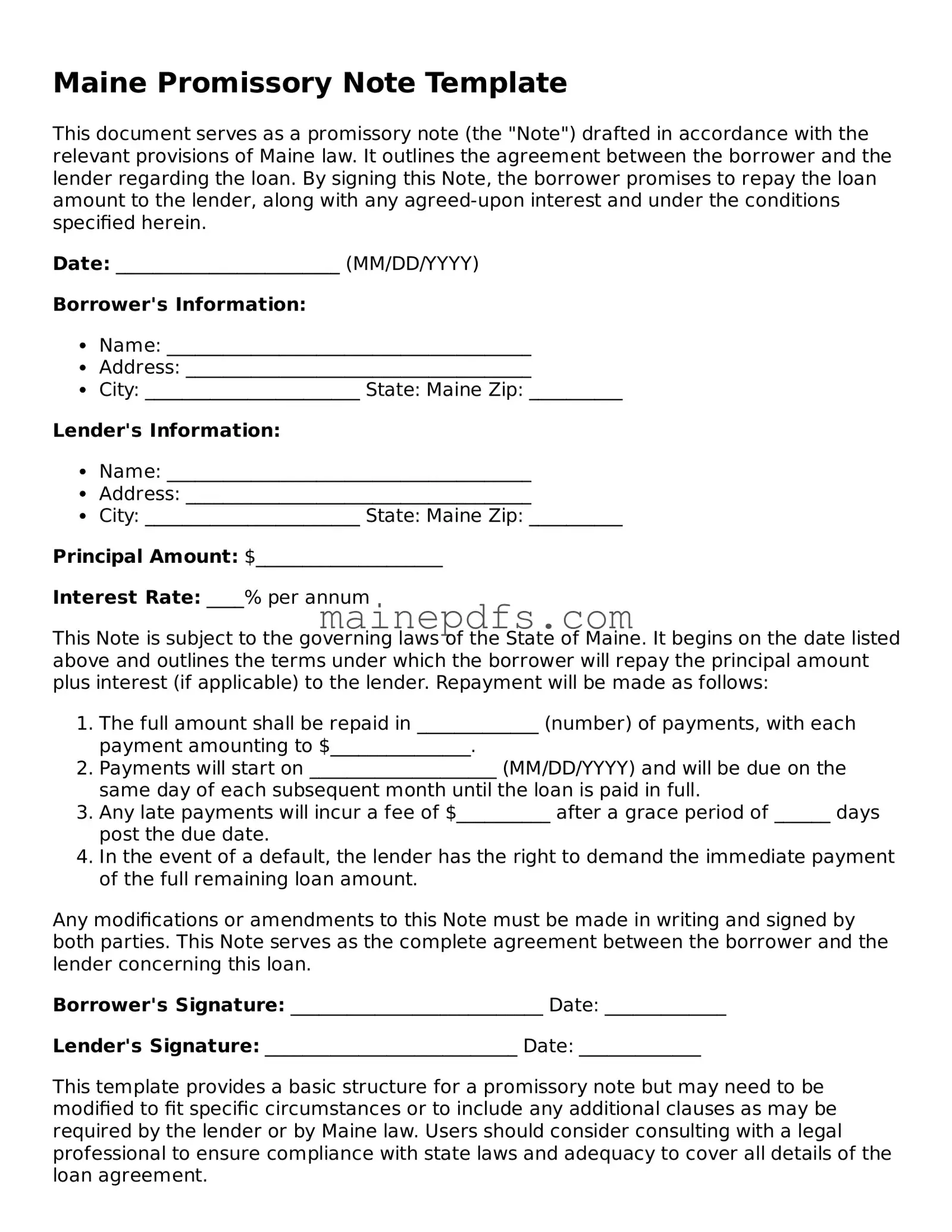Maine Promissory Note Template
This document serves as a promissory note (the "Note") drafted in accordance with the relevant provisions of Maine law. It outlines the agreement between the borrower and the lender regarding the loan. By signing this Note, the borrower promises to repay the loan amount to the lender, along with any agreed-upon interest and under the conditions specified herein.
Date: ________________________ (MM/DD/YYYY)
Borrower's Information:
- Name: _______________________________________
- Address: _____________________________________
- City: _______________________ State: Maine Zip: __________
Lender's Information:
- Name: _______________________________________
- Address: _____________________________________
- City: _______________________ State: Maine Zip: __________
Principal Amount: $____________________
Interest Rate: ____% per annum
This Note is subject to the governing laws of the State of Maine. It begins on the date listed above and outlines the terms under which the borrower will repay the principal amount plus interest (if applicable) to the lender. Repayment will be made as follows:
- The full amount shall be repaid in _____________ (number) of payments, with each payment amounting to $_______________.
- Payments will start on ____________________ (MM/DD/YYYY) and will be due on the same day of each subsequent month until the loan is paid in full.
- Any late payments will incur a fee of $__________ after a grace period of ______ days post the due date.
- In the event of a default, the lender has the right to demand the immediate payment of the full remaining loan amount.
Any modifications or amendments to this Note must be made in writing and signed by both parties. This Note serves as the complete agreement between the borrower and the lender concerning this loan.
Borrower's Signature: ___________________________ Date: _____________
Lender's Signature: ___________________________ Date: _____________
This template provides a basic structure for a promissory note but may need to be modified to fit specific circumstances or to include any additional clauses as may be required by the lender or by Maine law. Users should consider consulting with a legal professional to ensure compliance with state laws and adequacy to cover all details of the loan agreement.
